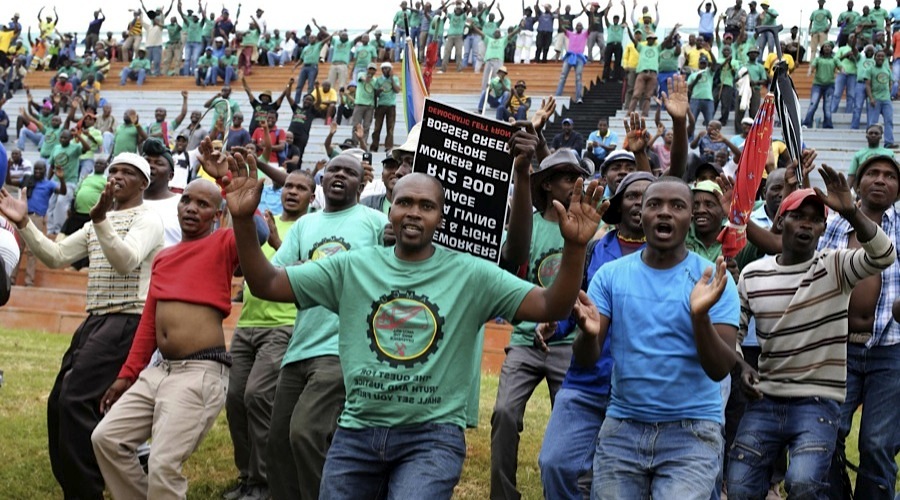
The downturn in commodity prices is having a particularly negative effect on South Africa, especially manganese, platinum group metals, iron ore and coal.
According to StatsSA’s mining production figures as of the end of March, volumes have declined a staggering 18 percent from the same time a year ago.
The government agency said the hardest hit commodity was manganese ore, which declined 24.3 percent, followed by platinum group metals which fell 23.7 percent. Iron ore output slid 21.4 percent, coal production dropped by 15.8 percent, and gold output also slumped, though not by much, only 7.4 percent.
“This is the biggest year-on-year decline I have ever witnessed, and confirms that both commodity prices AND volumes are coming down sharply which has huge implications for the broader South African economy,” said economist Mike Schussler, quoted by Mineweb.
Volume of mining production – year-on-year percentage change

Source: StatsSA
Schussler, who wrote in January that the current SuperCycle downturn may last for 20 years, said the contraction in mining production will crimp the South African economy to the tune of a 1.4 to 1.5 percent reduction in GDP. Other economists are less pessimistic, predicting a fall of 0.9%.
The industry could lose another 32,000 jobs, taking the mining employment roll down to 400,000, the lowest it’s been since the 1930s, reports Mineweb, adding the multiplier effect will have bad consequences for other industries including transportation, security, banking and manufacturing. Commodities account for roughly half of South African’s export earnings.
Problems in South African’s mining industry have not been lost on foreign investors. Last year in its annual survey, the Fraser Institute had South Africa falling out of the top ten mining investment destinations on the continent and dropping 11 places to 67th globally.
“This is the biggest year-on-year decline I have ever witnessed, and confirms that both commodity prices AND volumes are coming down sharply which has huge implications for the broader South African economy.”
Troubles in the mining sector reflect the country’s broader economic performance.
GDP growth in 2014 was the lowest for South Africa in five years. An unprecedented five-month wage strike by platinum mine workers, followed by another prolonged strike by more than 220,000 metalworkers and engineers, dragged growth down to 1.5% for the year.
Rolling electricity blackouts (or load shedding at it is referred to in the country) as the power utility struggles to keep its creaking coal-fired plants running have also badly shaken business confidence.
Comments on the state of mining in South Africa from the Fraser Institute survey also point to labour and power as central concerns:
“Highly political unionized workforce that perpetually demands more and more in return for less and less productivity.”
“Inadequate power generation and inadequate labour laws regarding mineral sector strikes.”